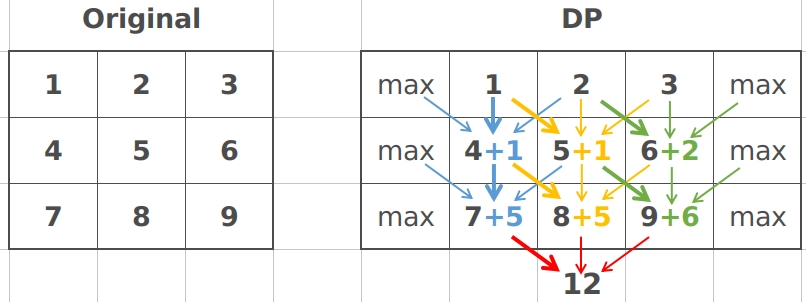31. Minimum Falling Path Sum
Given an n x n array of integers matrix, return the minimum sum of any falling path through matrix
A falling path starts at any element in the first row and chooses the element in the next row that is either directly below or diagonally left/right. Specifically, the next element from position (row, col) will be (row + 1, col - 1), (row + 1, col), or (row + 1, col + 1).
Example 1:
Input: matrix = [[2,1,3],[6,5,4],[7,8,9]]
Output: 13
Explanation: There are two falling paths with a minimum sum underlined below:
[[2,1,3], [[2,1,3],
[6,5,4], [6,5,4],
[7,8,9]] [7,8,9]]Example 2:
Input: matrix = [[-19,57],[-40,-5]]
Output: -59
Explanation: The falling path with a minimum sum is underlined below:
[[-19,57],
[-40,-5]]Example 3:
Input: matrix = [[-48]]
Output: -48Solution: (DP)
Approach: In each case we have 3 choices we choose the minimum of all.

Using an extra space
Solution: (Optimized DP)
Using Constant extra space
Last updated
Was this helpful?